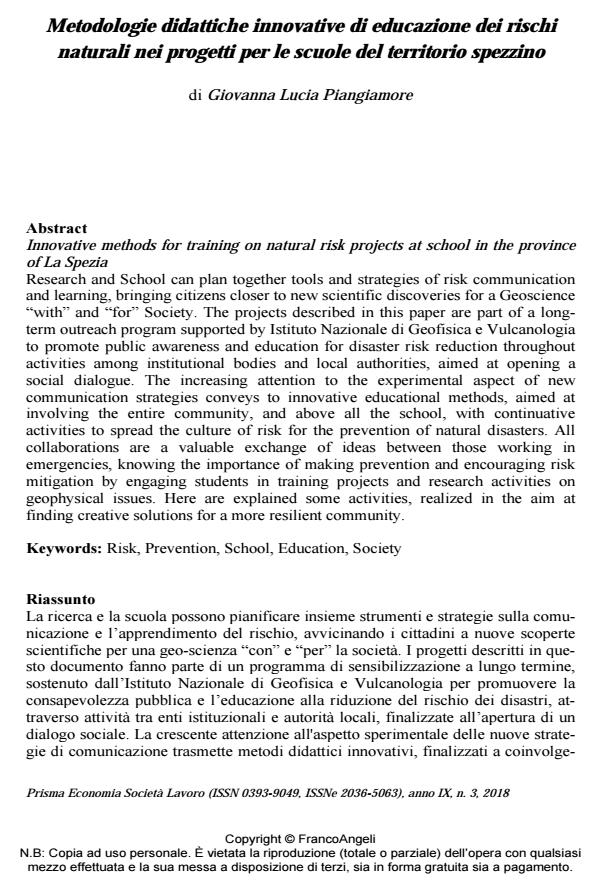Metodologie didattiche innovative di educazione dei rischi naturali nei progetti per le scuole del territorio spezzino
Titolo Rivista PRISMA Economia - Società - Lavoro
Autori/Curatori Giovanna Lucia Piangiamore
Anno di pubblicazione 2019 Fascicolo 2018/3
Lingua Italiano Numero pagine 21 P. 113-133 Dimensione file 236 KB
DOI 10.3280/PRI2018-003008
Il DOI è il codice a barre della proprietà intellettuale: per saperne di più
clicca qui
Qui sotto puoi vedere in anteprima la prima pagina di questo articolo.
Se questo articolo ti interessa, lo puoi acquistare (e scaricare in formato pdf) seguendo le facili indicazioni per acquistare il download credit. Acquista Download Credits per scaricare questo Articolo in formato PDF

FrancoAngeli è membro della Publishers International Linking Association, Inc (PILA)associazione indipendente e non profit per facilitare (attraverso i servizi tecnologici implementati da CrossRef.org) l’accesso degli studiosi ai contenuti digitali nelle pubblicazioni professionali e scientifiche
La ricerca e la scuola possono pianificare insieme strumenti e strategie sulla comunicazione e l’apprendimento del rischio, avvicinando i cittadini a nuove scoperte scientifiche per una geo-scienza "con" e "per" la società. I progetti descritti in questo documento fanno parte di un programma di sensibilizzazione a lungo termine, sostenuto dall’Istituto Nazionale di Geofisica e Vulcanologia per promuovere la consapevolezza pubblica e l’educazione alla riduzione del rischio dei disastri, attraverso attività tra enti istituzionali e autorità locali, finalizzate all’apertura di un dialogo sociale. La crescente attenzione all'aspetto sperimentale delle nuove strategie di comunicazione trasmette metodi didattici innovativi, finalizzati a coinvolgere l'intera comunità e, soprattutto, la scuola, con attività continuative di diffusione della cultura del rischio per la prevenzione dei disastri naturali. Tutte le collaborazioni rappresentano un prezioso scambio di idee tra coloro che lavorano in situazioni di emergenza, considerando l’importanza del fare prevenzione e dell’incorag-giare la mitigazione del rischio, coinvolgendo gli studenti in progetti di formazione e in attività di ricerca su questioni geofisiche. Qui vengono spiegate alcune attività, realizzate allo scopo di trovare soluzioni creative per una comunità più resiliente.
Parole chiave:Rischio, Prevenzione, Scuola, Educazione, Società
Giovanna Lucia Piangiamore, Metodologie didattiche innovative di educazione dei rischi naturali nei progetti per le scuole del territorio spezzino in "PRISMA Economia - Società - Lavoro" 3/2018, pp 113-133, DOI: 10.3280/PRI2018-003008